Numerical Study on Hydraulic Fracture Propagation in a Layered Continental Shale Reservoir
Abstract
1. Introduction
2. Geological Background
3. Geological Model of the Shale Gas Reservoir
4. Numerical Method
4.1. Governing Equation
4.2. Validation
5. Hydraulic Fracture Propagation in the Layered Shale Reservoir
5.1. Numerical Model and Parameter Settings
5.2. Numerical Results and Discussion
5.2.1. Effect of Vertical Stress Difference on Fracture Complexity
5.2.2. Effect of Fluid Viscosity on Fracture Complexity
5.2.3. Effect of Injection Rate on Fracture Complexity
5.2.4. Effect of Bedding Aperture on Fracture Complexity
6. Conclusions
Author Contributions
Funding
Data Availability Statement
Conflicts of Interest
References
- Teufel, L.W.; Clark, J.A. Hydraulic fracture propagation in layered rock: Experimental studies of fracture containment. SPE J. 1984, 24, 19–32. [Google Scholar] [CrossRef]
- Catalli, F.; Meier, M.A.; Wiemer, S. The role of Coulomb stress changes for injection-induced seismicity: The Basel enhanced geothermal system. Geophys. Res. Lett. 2013, 40, 72–77. [Google Scholar] [CrossRef]
- Wang, J.; Xie, H.; Li, C. Anisotropic failure behavior and breakdown pressure interpretation of hydraulic fracturing experiments on shale. Int. J. Rock Mech. Min. Sci. 2021, 142, 104748. [Google Scholar] [CrossRef]
- Hu, G. Influences of anisotropic mechanical properties in the hydraulic fracturing design in shale reservoirs. Drill. Eng. 2022, 49, 97–103. [Google Scholar]
- Silveira, B.T.; Roehl, D.; Sanchez, E.C.M. Forecasting of the interaction between hydraulic and natural fractures using an artificial neural network. J. Petrol. Sci. Eng. 2022, 208, 109446. [Google Scholar] [CrossRef]
- Fu, H.; Cai, B.; Geng, M.; Jia, A.; Weng, D.; Liang, T.; Zhang, F.; Wen, X.; Xiu, N. Three dimensional simulation of hydraulic fracture propagation based on vertical reservoir heterogeneity. Nat. Gas Ind. 2022, 42, 56–68. [Google Scholar]
- Zheng, Y.; He, R.; Huang, L.; Bai, Y.; Wang, C.; Chen, W.; Wang, W. Exploring the effect of engineering parameters on the penetration of hydraulic fractures through bedding planes in different propagation regimes. Comput. Geotech. 2022, 146, 104736. [Google Scholar] [CrossRef]
- Renshaw, C.E.; Pollard, D.D. An experimentally verified criterion for propagation across unbounded frictional interfaces in brittle, linear elastic materials. Int. J. Rock Mech. Min. Sci. 1995, 32, 237–249. [Google Scholar] [CrossRef]
- Loon, V.L. Preferred orientations and anisotropy in shales: Callovo-Oxfordian shale (France) and Opalinus Clay (Switzerland). Clays Clay Miner. 2008, 56, 285–306. [Google Scholar]
- Lisjak, A.; Grasselli, G.; Vietor, T. Continuum–discontinuum analysis of failure mechanisms around unsupported circular excavations in anisotropic clay shales. Int. J. Rock Mech. Min. Sci. 2014, 65, 96–115. [Google Scholar] [CrossRef]
- Heng, S.; Li, X.; Liu, X.; Chen, Y. Experimental study on the mechanical properties of bedding planes in shale. J. Nat. Gas Sci. Eng. 2020, 76, 103161. [Google Scholar] [CrossRef]
- Dou, F.; Wang, J.G. A numerical investigation for the impacts of shale matrix heterogeneity on hydraulic fracturing with a two-dimensional particle assemblage simulation model. J. Nat. Gas Sci. Eng. 2022, 104, 104678. [Google Scholar] [CrossRef]
- Zhang, X.; Jeffrey, R.G.; Thiercelin, M. Mechanics of fluid-driven fracture growth in naturally fractured reservoirs with simple network geometries. J. Geophys. Res. 2009, 114, B12406. [Google Scholar] [CrossRef]
- Li, Y.; Zhang, Z.; Wei, S.; Yang, P.; Shang, Y. Opportunities in Measuring Multiscale Pore Structure of the Continental Shale of the Yanchang Formation, Ordos Basin, China. Energies 2021, 14, 5282. [Google Scholar] [CrossRef]
- Zhao, Y.; Zhang, Y.; Wang, C.; Liu, Q. Hydraulic fracturing characteristics and evaluation of fracturing effectiveness under different anisotropic angles and injection rates: An experimental investigation in absence of confining pressure. J. Nat. Gas Sci. Eng. 2022, 97, 104343. [Google Scholar] [CrossRef]
- Warpinski, N.R.; Clark, J.A.; Schmidt, R.A.; Huddle, C.W. Laboratory investigation on the effect of in-situ stresses on hydraulic fracture containment. SPE J. 1982, 22, 333–340. [Google Scholar] [CrossRef]
- Olson, J.E.; Bahorich, B.; Holder, J. Examining hydraulic fracture: Natural fracture interaction in hydrostone block experiments. In Proceedings of the SPE Hydraulic Fracturing Technology Conference, The Woodlands, TX, USA, 6–8 February 2012; p. 152618. [Google Scholar]
- Liu, Z.Y.; Jin, Y.; Chen, M.; Hou, B. Analysis of Non-Planar Multi-Fracture Propagation from Layered-Formation Inclined-Well Hydraulic Fracturing. Rock Mech. Rock Eng. 2016, 49, 1747–1758. [Google Scholar] [CrossRef]
- Huang, B.X.; Liu, J.W. Experimental investigation of the effect of bedding planes on hydraulic fracturing under true triaxial stress. Rock Mech. Rock Eng. 2017, 50, 2627–2643. [Google Scholar] [CrossRef]
- Ranjith, P.G.; Wanniarachchi, W.A.M.; Perera, M.S.A.; Rathnaweera, T.D. Investigation of the effect of foam flow rate on foam-based hydraulic fracturing of shale reservoir rocks with natural fractures: An experimental study. J. Petrol. Sci. Eng. 2018, 169, 518–531. [Google Scholar] [CrossRef]
- Tan, P.; Jin, Y.; Han, K.; Hou, B.; Chen, M.; Guo, X.; Gao, J. Analysis of hydraulic fracture initiation and vertical propagation behavior in laminated shale formation. Fuel 2017, 206, 482–493. [Google Scholar] [CrossRef]
- Tan, P.; Jin, Y.; Yuan, L.; Xiong, Z.Y.; Hou, B.; Chen, M.; Wan, L.M. Understanding hydraulic fracture propagation behavior in tight sandstone–coal interbedded formations: An experimental investigation. Petrol. Sci. 2019, 16, 148–160. [Google Scholar] [CrossRef]
- Tan, P.; Pang, H.W.; Zhang, R.X.; Jin, Y.; Zhou, Y.; Kao, J.; Fan, M. Experimental investigation into hydraulic fracture geometry and proppant migration characteristics for southeastern Sichuan deep shale reservoirs. J. Petrol. Sci. Eng. 2020, 184, 106517. [Google Scholar] [CrossRef]
- Wan, L.; Hou, B.; Meng, H.; Chang, Z.; Muhadasi, Y.; Chen, M. Experimental investigation of fracture initiation position and fluid viscosity effect in multi-layered coal strata. J. Petrol. Sci. Eng. 2019, 182, 106310. [Google Scholar] [CrossRef]
- Wan, L.; Hou, B.; Tan, P.; Chang, Z.; Muhadasi, Y. Observing the effects of transition zone properties on fracture vertical propagation behavior for coal measure strata. J. Struct. Geol. 2019, 126, 69–82. [Google Scholar] [CrossRef]
- Zhang, J.; Li, Y.; Pan, Y.; Wang, X.; Yan, M.; Shi, X.; Zhou, X.; Li, H. Experiments and analysis on the influence of multiple closed cemented natural fractures on hydraulic fracture propagation in a tight sandstone reservoir. Eng. Geol. 2021, 281, 105981. [Google Scholar] [CrossRef]
- Jamaloei, B.Y. A critical review of common models in hydraulic-fracturing simulation: A practical guide for practitioners. Theor. Appl. Fract. Mech. 2021, 113, 102937. [Google Scholar] [CrossRef]
- Fu, S.H.; Hou, B.; Xia, Y.; Chen, M.; Wang, S.; Tan, P. The study of hydraulic fracture height growth in coal measure shale strata with complex geologic characteristics. J. Petrol. Sci. Eng. 2022, 211, 110164. [Google Scholar] [CrossRef]
- Gu, H.; Siebrits, E.; Sabourov, A. Hydraulic fracture modeling with bedding plane interfacial slip. In Proceedings of the SPE Eastern Regional/AAPG Eastern Section Joint Meeting, Pittsburgh, PA, USA, 11–15 October 2008; p. 117445. [Google Scholar]
- Zhang, X.; Wu, B.; Jeffrey, R.G.; Connell, L.D.; Zhang, G. A pseudo-3D model for hydraulic fracture growth in a layered rock. Int. J. Solids Struct. 2017, 115, 208–223. [Google Scholar] [CrossRef]
- Tang, J.; Wu, K. A 3-D model for simulation of weak interface slippage for fracture height containment in shale reservoirs. Int. J. Solids Struct. 2018, 144, 248–264. [Google Scholar] [CrossRef]
- Tang, J.; Wu, K.; Li, Y.; Hu, Q.; Ehlig-Economides, C. Numerical investigation of the interactions between hydraulic fracture and bedding planes with non-orthogonal approach angle. Eng. Fract. Mech. 2018, 200, 1–16. [Google Scholar] [CrossRef]
- Tang, J.; Wu, K.; Zuo, L.; Xiao, L.; Sun, S.; Ehlig-Economides, C. Investigation of rupture and slip mechanisms of hydraulic fractures in multiple-layered formations. SPE J. 2019, 24, 2292–2307. [Google Scholar] [CrossRef]
- Xie, J.; Tang, J.; Yong, R.; Fan, Y.; Zuo, L.; Chen, X.; Li, Y. A 3-D hydraulic fracture propagation model applied for shale gas reservoirs with multiple bedding planes. Eng. Fract. Mech. 2020, 228, 106872. [Google Scholar] [CrossRef]
- Dahi-Taleghani, A.; Olson, J.E. Numerical modeling of multi-stranded hydraulic fracture propagation: Accounting for the interaction between induced and natural fractures. SPE J. 2011, 16, 575–581. [Google Scholar] [CrossRef]
- Klimenko, D.; Dahi-Taleghani, A. A modified extended finite element method for fluid-driven fractures incorporating variable primary energy loss mechanisms. Int. J. Rock Mech. Min. Sci. 2018, 106, 329–341. [Google Scholar] [CrossRef]
- Settgast, R.R.; Fu, P.; Walsh, S.D.C.; White, J.A.; Annavarapu, C.; Ryerson, F.J. A fully coupled method for massively parallel simulation of hydraulically driven fractures in 3-dimensions. Int. J. Numer. Anal. Met. 2017, 41, 627–653. [Google Scholar] [CrossRef]
- Tan, P.; Jin, Y.; Pang, H.W. Hydraulic fracture vertical propagation behavior in transversely isotropic layered shale formation with transition zone using XFEM-based CZM method. Eng. Fract. Mech. 2021, 248, 107707. [Google Scholar] [CrossRef]
- Potyondy, D.O.; Cundall, P.A. A bonded-particle model for rock. Int. J. Rock Mech. Min. Sci. 2004, 41, 1329–1364. [Google Scholar] [CrossRef]
- Damjanac, B.; Cundall, P. Application of distinct element methods to simulation of hydraulic fracturing in naturally fractured reservoirs. Comput. Geotech. 2016, 71, 283–294. [Google Scholar] [CrossRef]
- Zhou, J.; Zhang, L.; Pan, Z.; Han, Z. Numerical studies of interactions between hydraulic and natural fractures by Smooth Joint Model. J. Nat. Gas Sci. Eng. 2017, 46, 592–602. [Google Scholar] [CrossRef]
- Zhang, L.; Zhou, J.; Braun, A.; Han, Z. Sensitivity analysis on the interaction between hydraulic and natural fractures based on an explicitly coupled hydro-geomechanical model in PFC2D. J. Petrol. Sci. Eng. 2018, 167, 638–653. [Google Scholar] [CrossRef]
- Yao, W.; Mostafa, S.; Yang, Z.; Xu, G. Role of natural fractures characteristics on the performance of hydraulic fracturing for deep energy extraction using discrete fracture network (DFN). Eng. Frac. Mech. 2020, 230, 106962. [Google Scholar] [CrossRef]
- Li, M.; Wu, J.; Li, J.; Zhuang, L.; Wang, S.; Zhang, F. Modeling of hydraulic fracturing in polymineralic rock with a grain-based DEM coupled with a pore network model. Eng. Frac. Mech. 2022, 275, 108801. [Google Scholar] [CrossRef]
- Li, L.; Huang, B.; Tan, Y.; Deng, X.; Li, Y.Y.; Zheng, H. Geometric Heterogeneity of Continental Shale in the Yanchang Formation, Southern Ordos Basin, China. Sci. Rep. 2017, 7, 6006. [Google Scholar] [CrossRef] [PubMed]
- Li, L.; Huang, B.; Li, Y.; Hu, R.; Li, X. Multi-scale modeling of shale laminas and fracture networks in the Yanchang formation, Southern Ordos Basin, China. Eng. Geol. 2018, 243, 231–240. [Google Scholar] [CrossRef]
- Guo, X.; Zhang, J.; Sun, X.; Ma, Z.; Mu, J.; Zhang, M.; Liu, J. Effect of fiber on fracturing of high conductivity fractures. Drill. Eng. 2021, 48, 13–20. [Google Scholar]
- Lai, J.; Wang, G.; Ran, Y.; Zhou, Z.; Cui, Y. Impact of diagenesison the reservoir quality of tight oil sandstones: The case of upper Triassic Yanchang Formation Chang 7 oil layers in Ordos Basin, China. J. Petrol. Sci. Eng. 2016, 145, 54–65. [Google Scholar] [CrossRef]
- Zhao, J.; Liu, C.; Zhang, D.; Guo, Y.; Qi, Y.; Lv, Q.; Zhang, L.; Ma, H. Description and its hydrocarbon geological implications of outcrop sections of Triassic Chang-7 Member in southern Ordos Basin. Pet. Reserv. Eval. Dev. 2022, 12, 233–245. [Google Scholar]
- Nasehi, M.J.; Mortazavi, A. Effects of in-situ stress regime and intact rock strength parameters on the hydraulic fracturing. J. Pet. Sci. Eng. 2013, 108, 211–221. [Google Scholar] [CrossRef]
- Zheng, Y.; Liu, J.; Lei, Y. The propagation behavior of hydraulic fracture in rock mass with cemented joints. Geofluids 2019, 2019, 5406870. [Google Scholar] [CrossRef]
- Chen, Z.; Yang, Z.; Wang, M. Hydro-mechanical coupled mechanisms of hydraulic fracture propagation in rocks with cemented natural fractures. Comput. Geotech. 2018, 163, 421–434. [Google Scholar] [CrossRef]
- Witherspoon, P.A.; Wang, J.S.Y.; Iwai, K.; Gale, J.E. Validity of cubic law for fluid flow in a deformable rock fracture. Water Resour. Res. 1980, 16, 1016–1024. [Google Scholar] [CrossRef]
- Dippenaar, M.A.; Louis Van Rooy, J. On the cubic law and variably saturated flow through discrete open roughwalled discontinuities. Int. J. Rock Mech. Min. Sci. 2016, 89, 200–211. [Google Scholar] [CrossRef]
- Perkins, T.K.; Kern, L.R. Widths of hydraulic fractures. J. Pet. Technol. 1961, 13, 937–949. [Google Scholar] [CrossRef]
- Wang, X.Z.; Zhang, L.X.; Gao, C. The heterogeneity of shale gas reservoir in the Yanchang Formation, Xiasiwan area, Ordos Basin. Earth Sci. Front. 2016, 23, 134–145. [Google Scholar] [CrossRef]
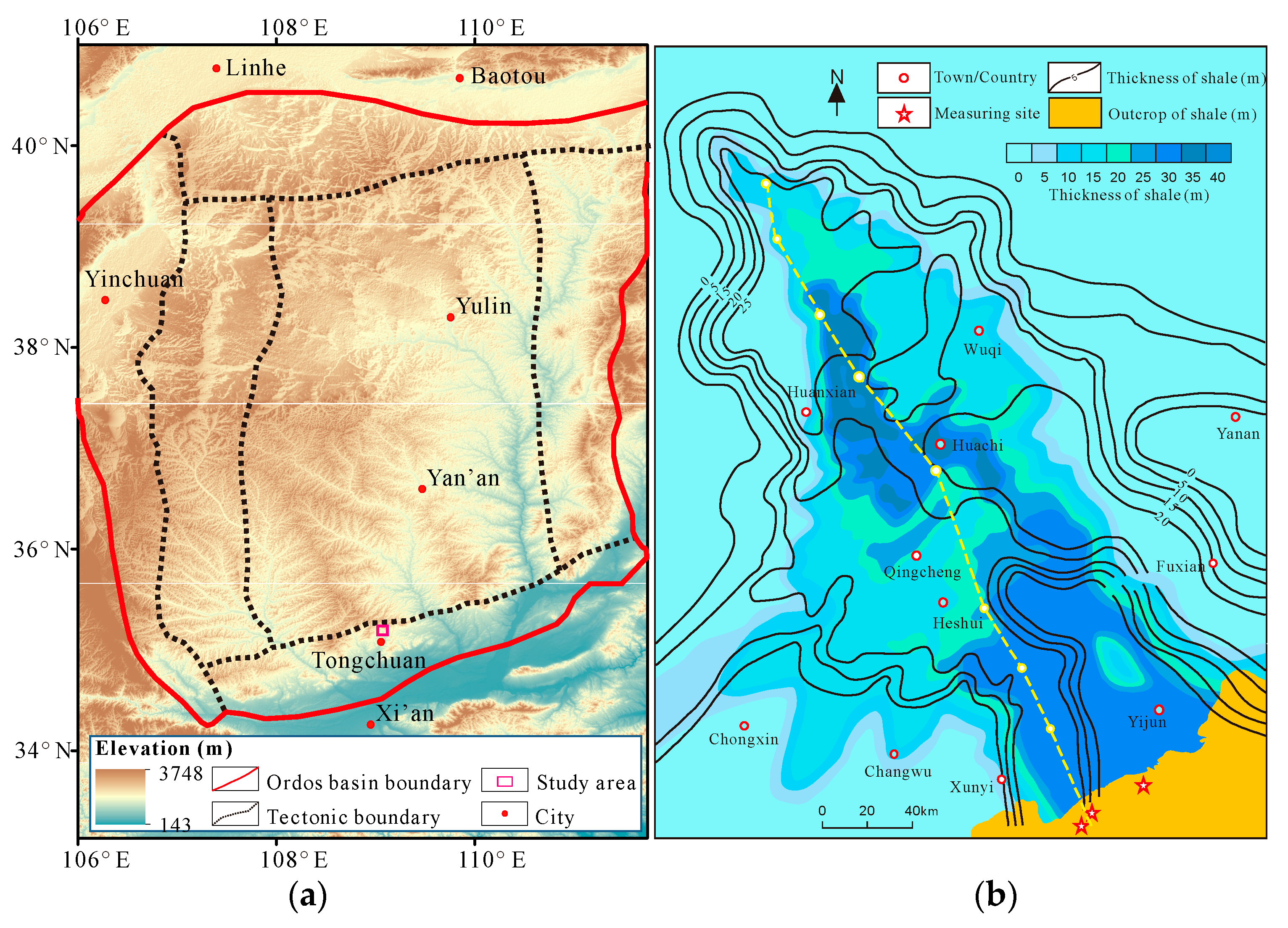

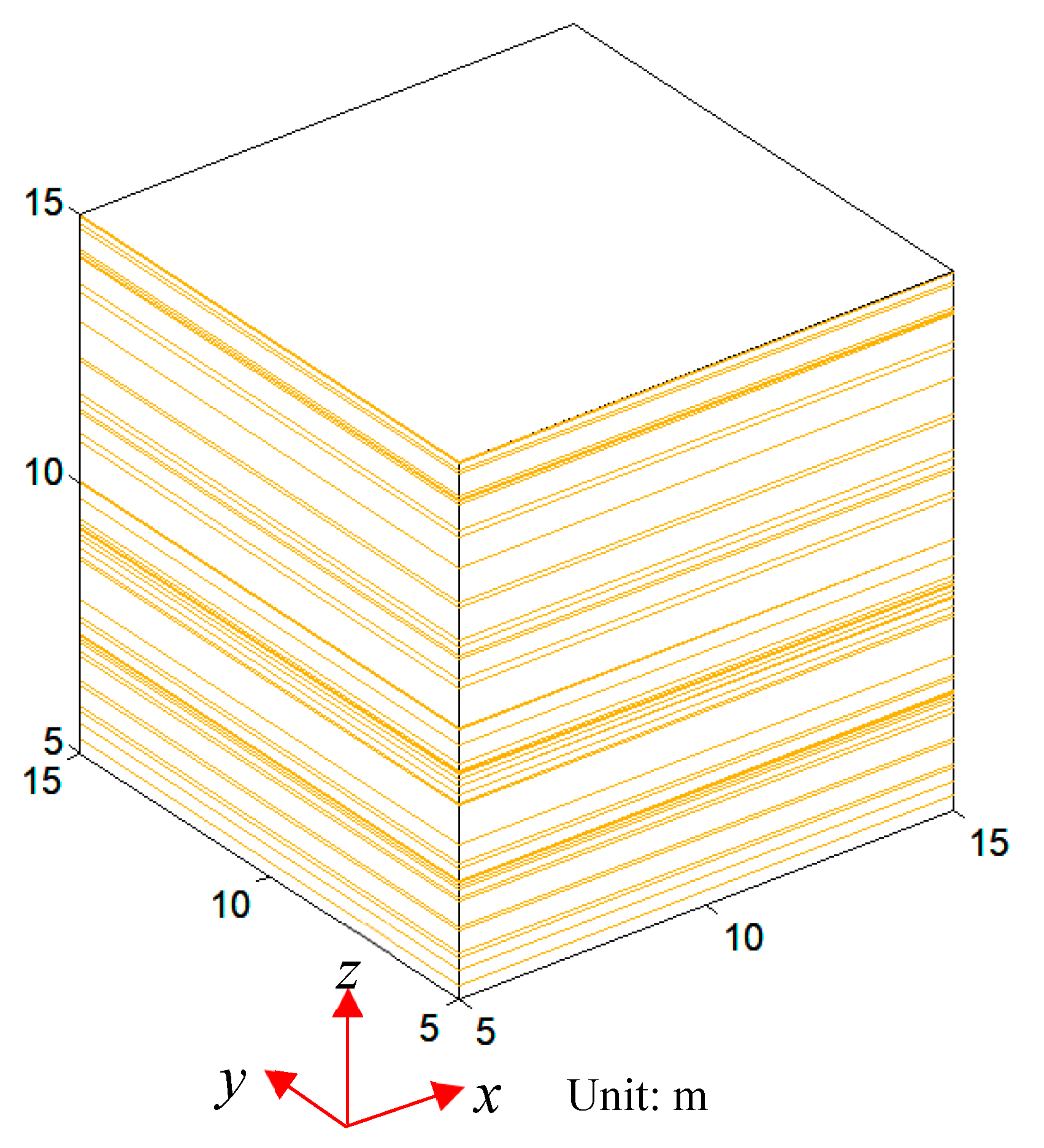
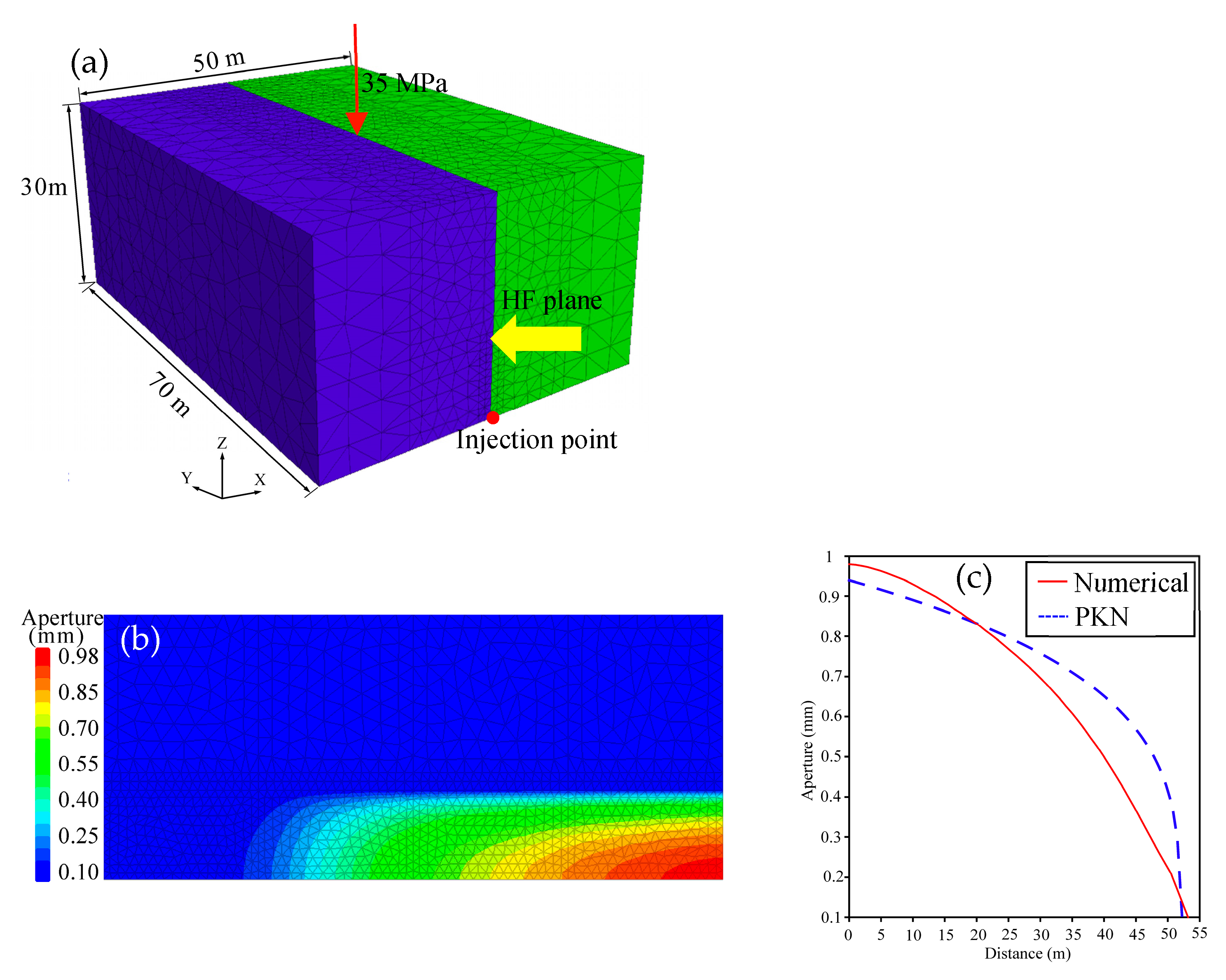


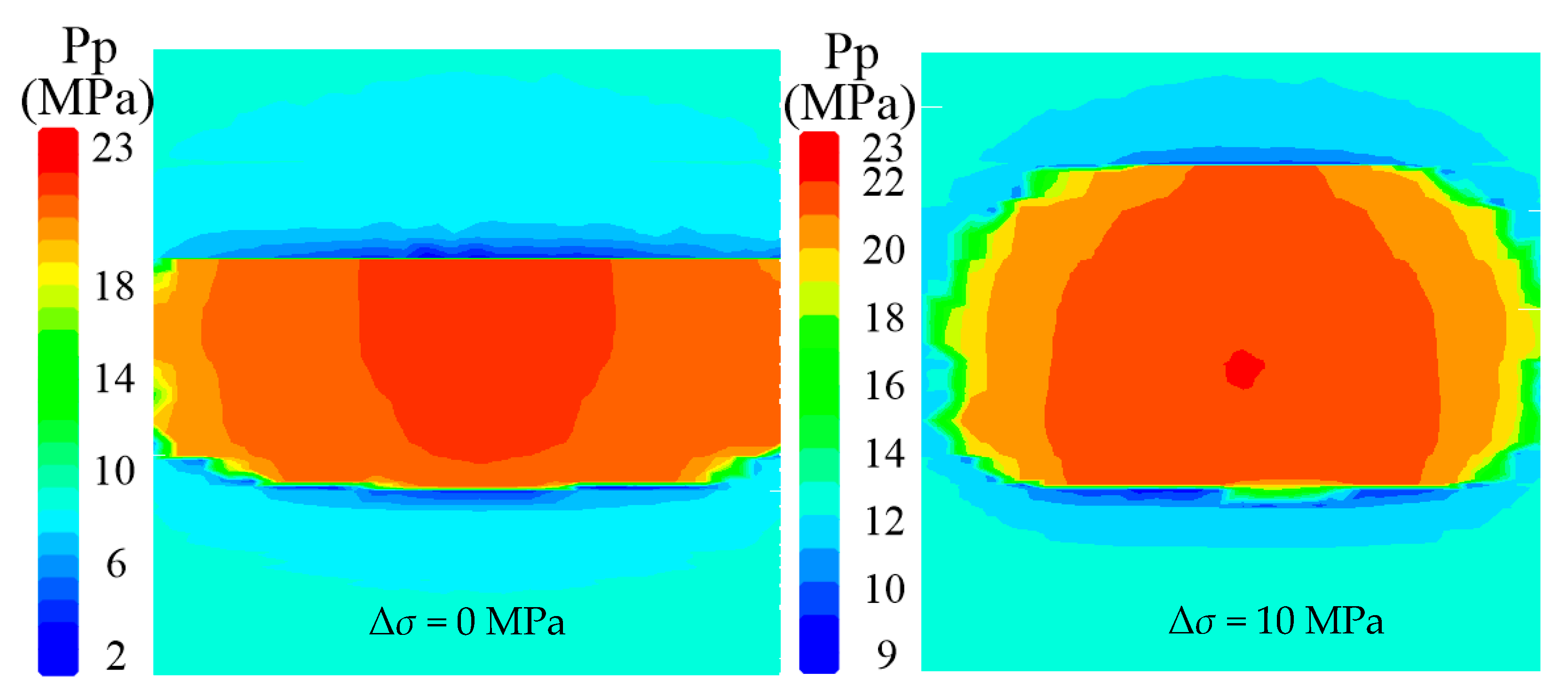

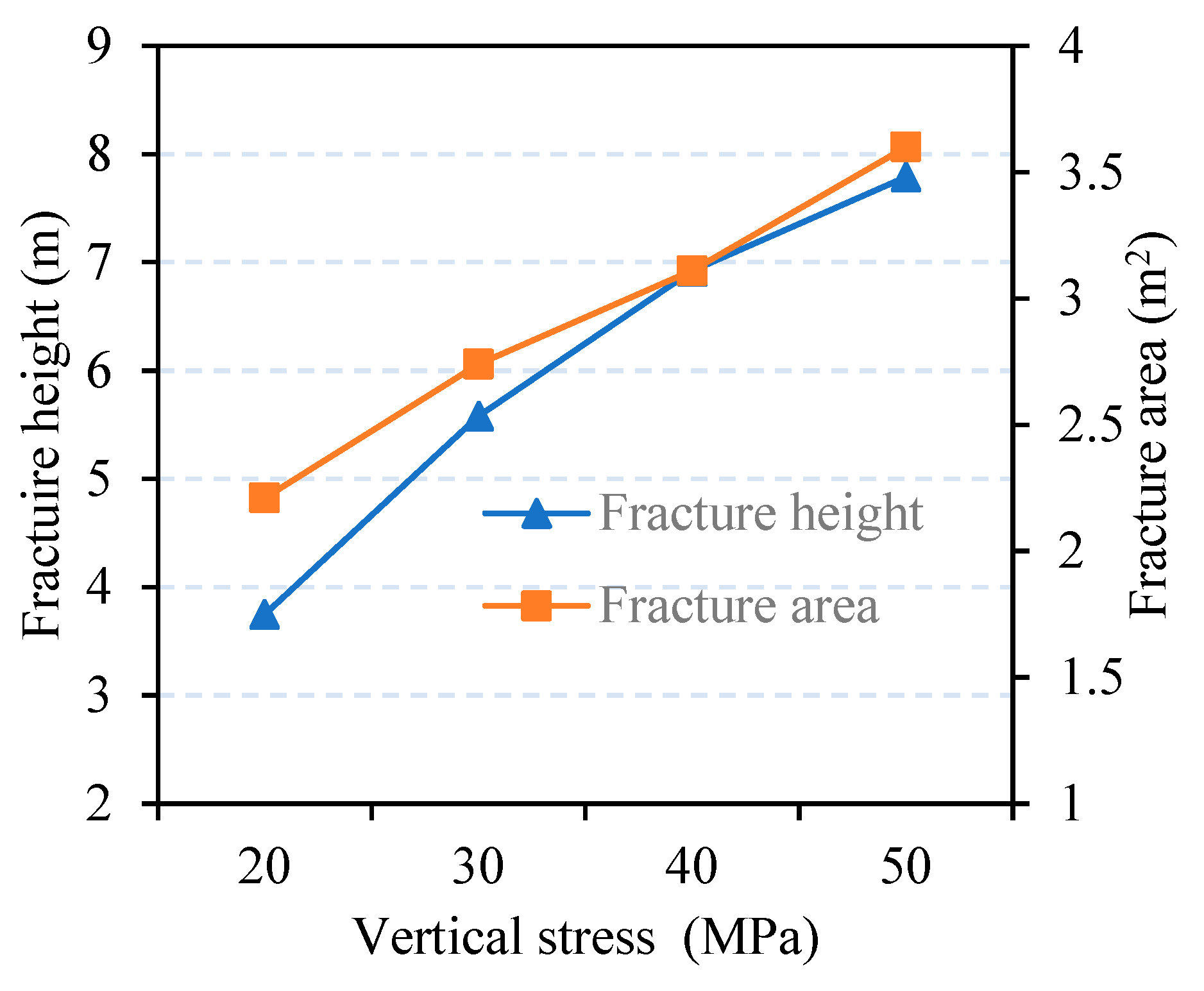


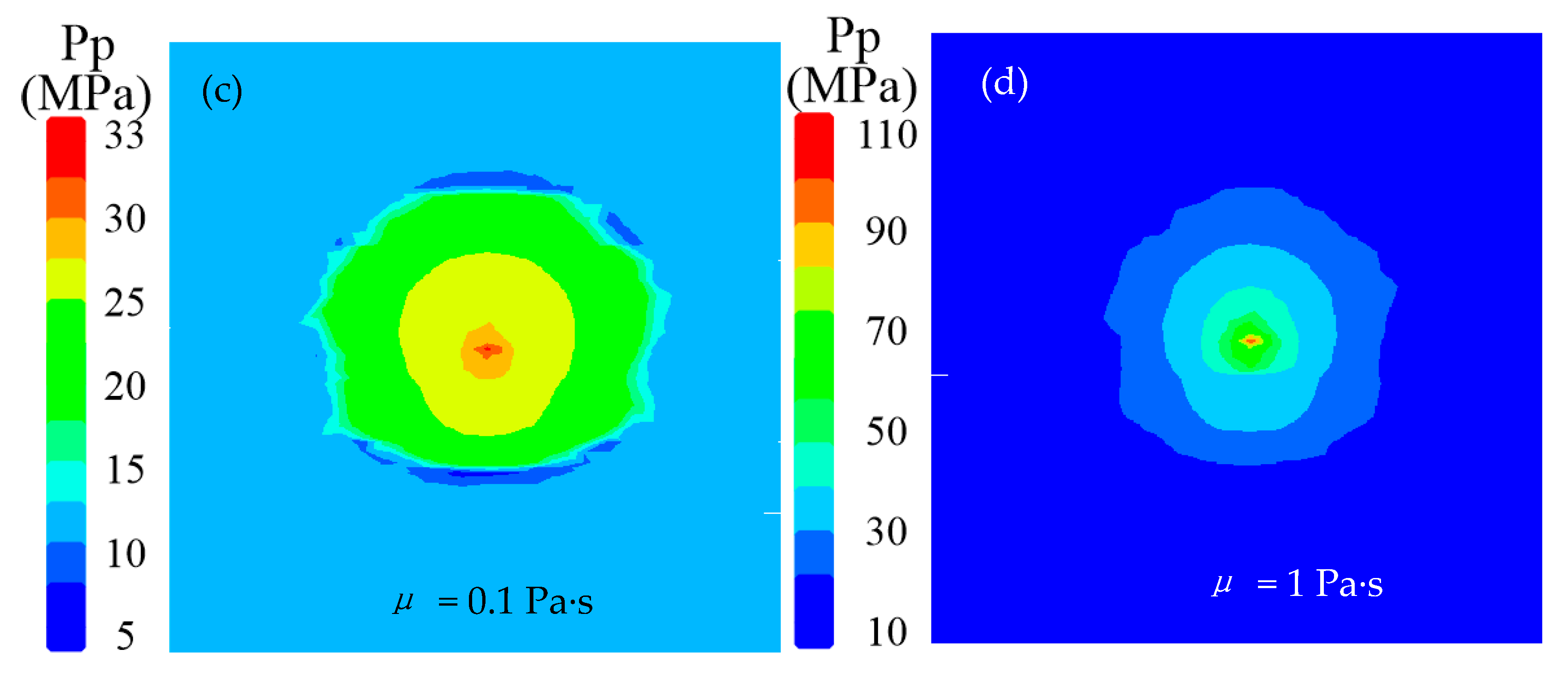


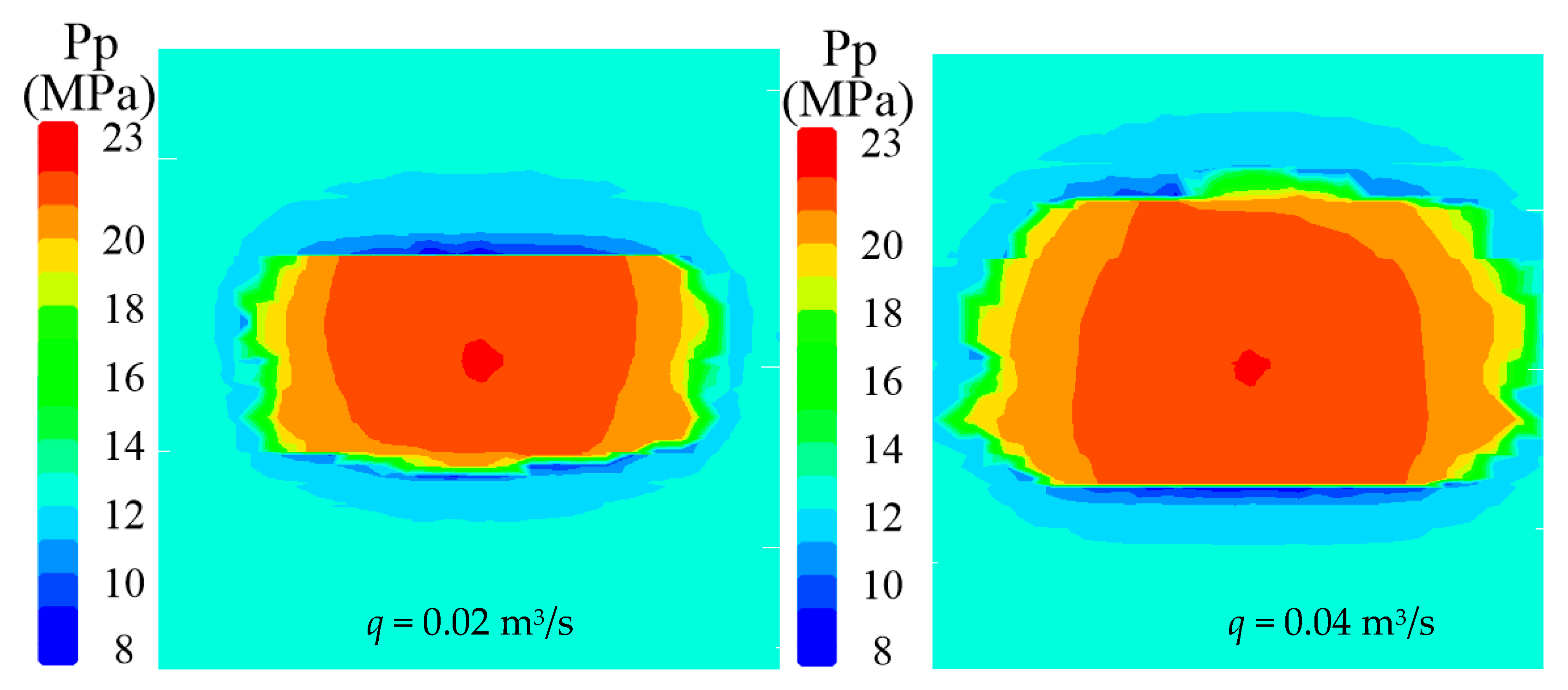


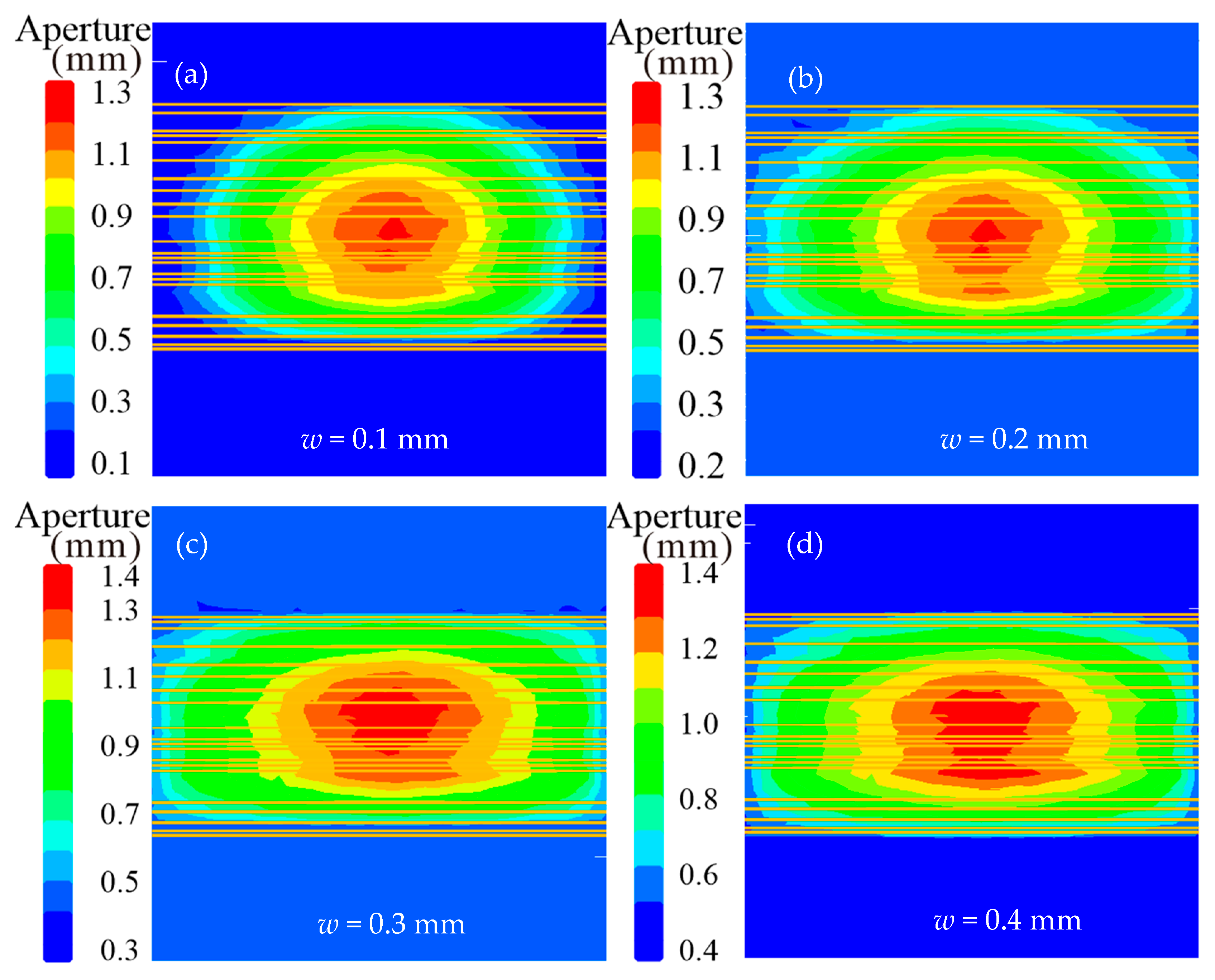
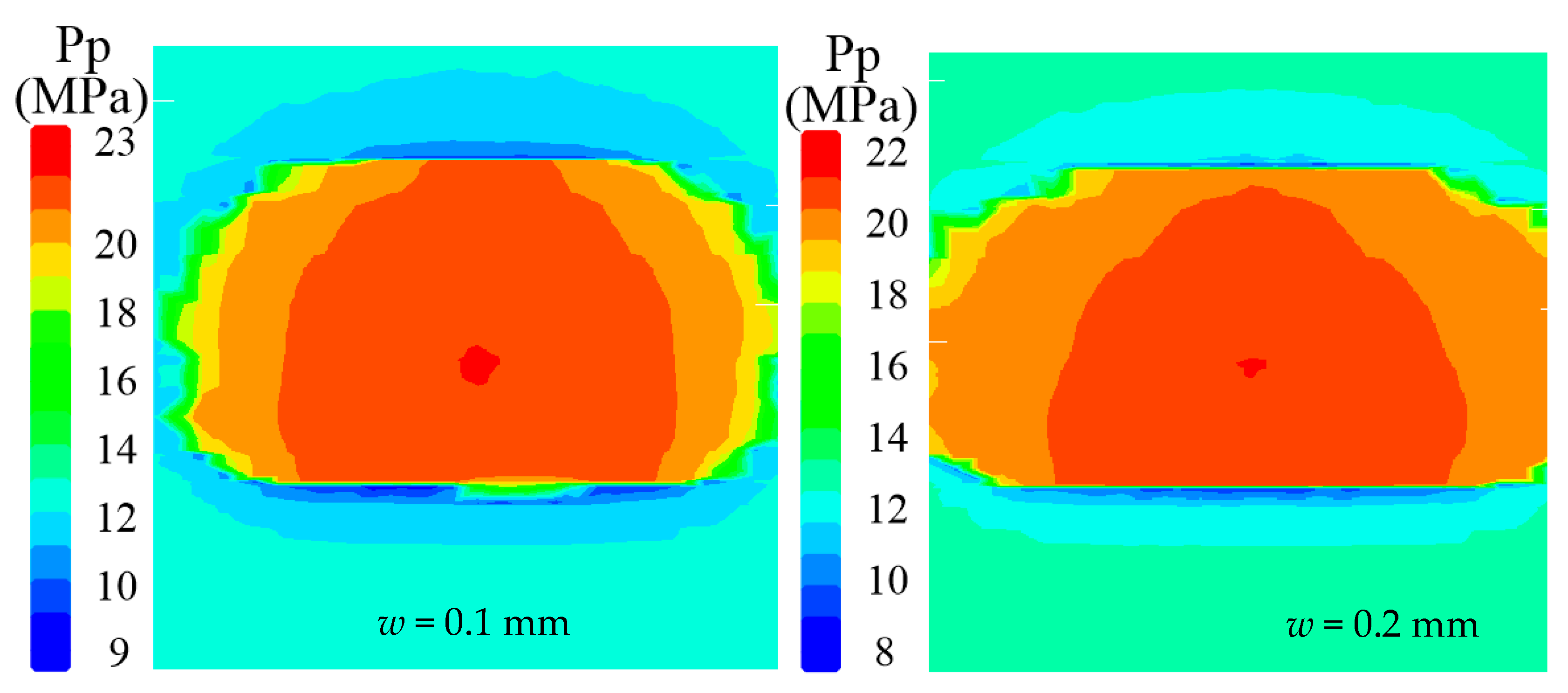
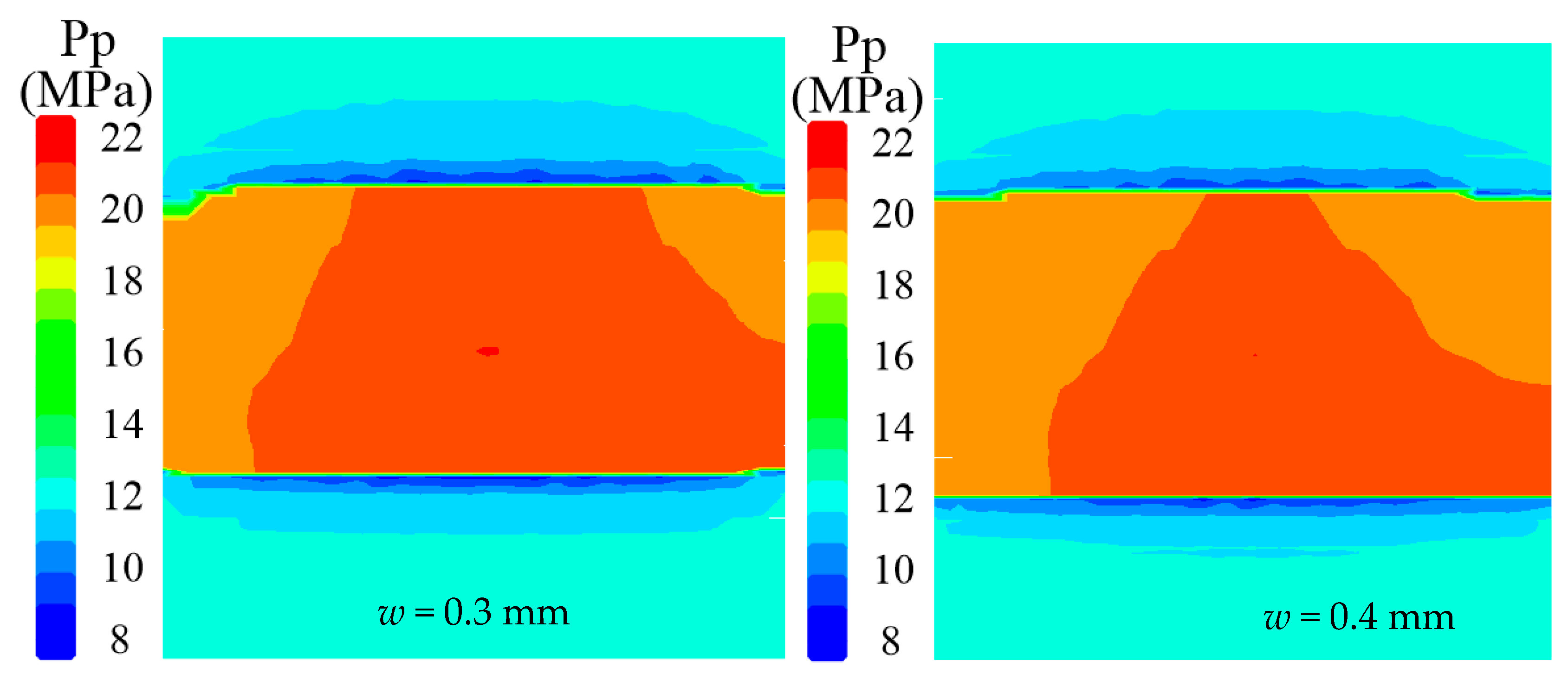

Publisher’s Note: MDPI stays neutral with regard to jurisdictional claims in published maps and institutional affiliations. |
© 2022 by the authors. Licensee MDPI, Basel, Switzerland. This article is an open access article distributed under the terms and conditions of the Creative Commons Attribution (CC BY) license (https://creativecommons.org/licenses/by/4.0/).
Share and Cite
Han, L.; Li, Y.; Hu, W.; Wei, S.; Wang, W.; Zhang, F.; Wang, Y. Numerical Study on Hydraulic Fracture Propagation in a Layered Continental Shale Reservoir. Energies 2022, 15, 8840. https://doi.org/10.3390/en15238840
Han L, Li Y, Hu W, Wei S, Wang W, Zhang F, Wang Y. Numerical Study on Hydraulic Fracture Propagation in a Layered Continental Shale Reservoir. Energies. 2022; 15(23):8840. https://doi.org/10.3390/en15238840
Chicago/Turabian StyleHan, Lili, Yanyan Li, Wei Hu, Siyu Wei, Wei Wang, Fengyan Zhang, and Ye Wang. 2022. "Numerical Study on Hydraulic Fracture Propagation in a Layered Continental Shale Reservoir" Energies 15, no. 23: 8840. https://doi.org/10.3390/en15238840
APA StyleHan, L., Li, Y., Hu, W., Wei, S., Wang, W., Zhang, F., & Wang, Y. (2022). Numerical Study on Hydraulic Fracture Propagation in a Layered Continental Shale Reservoir. Energies, 15(23), 8840. https://doi.org/10.3390/en15238840







